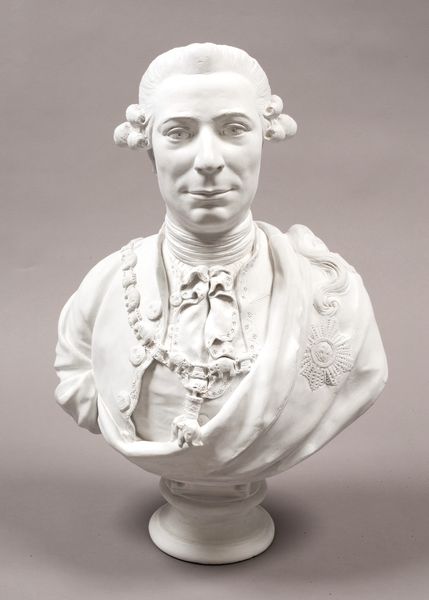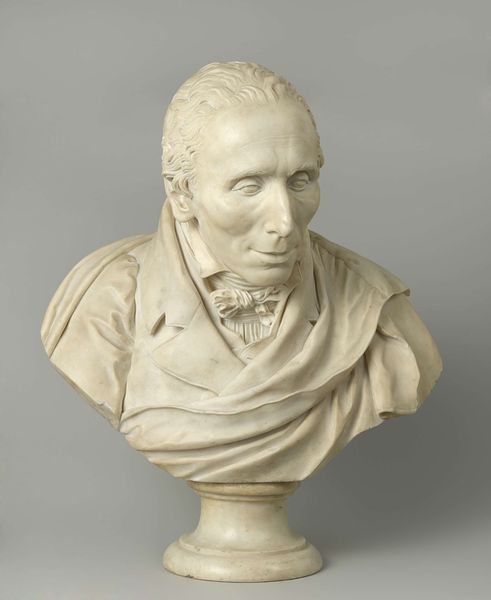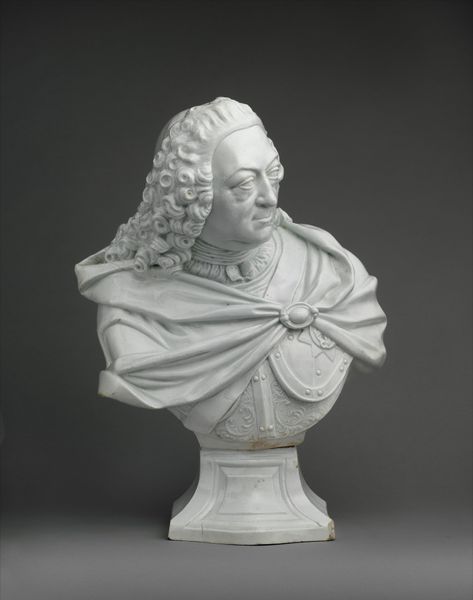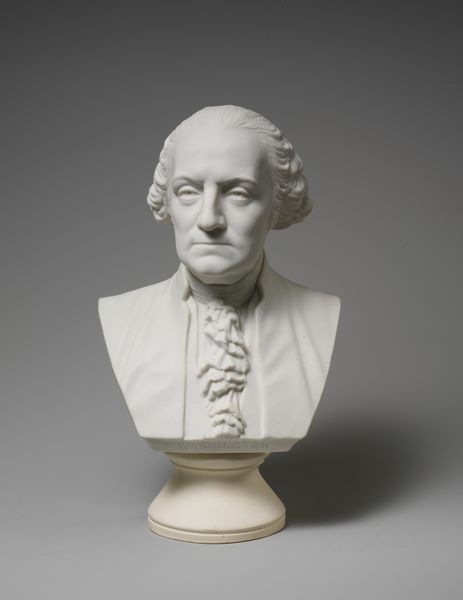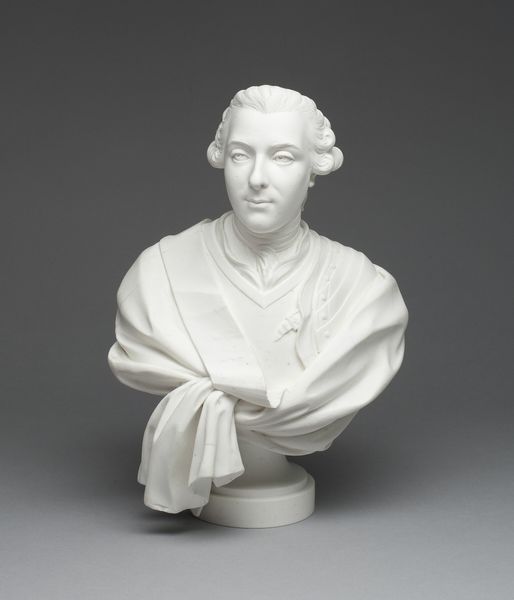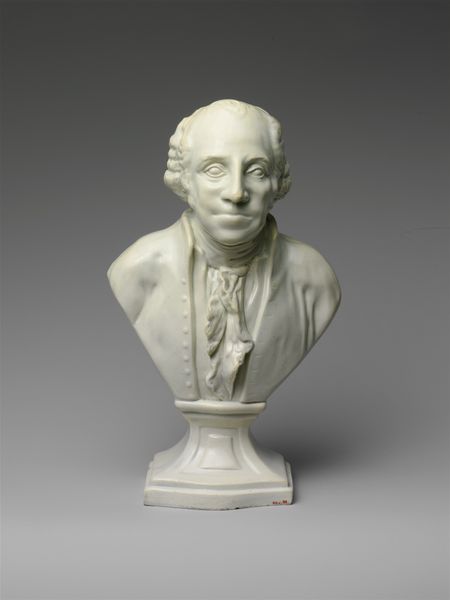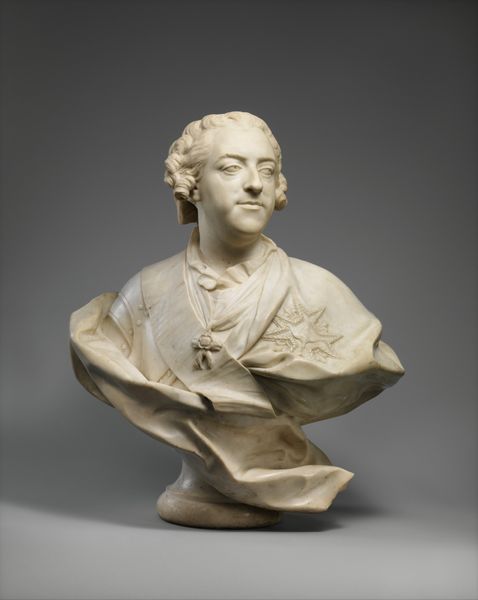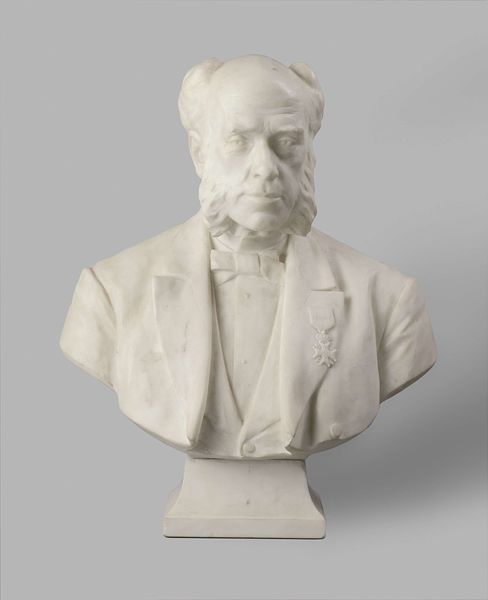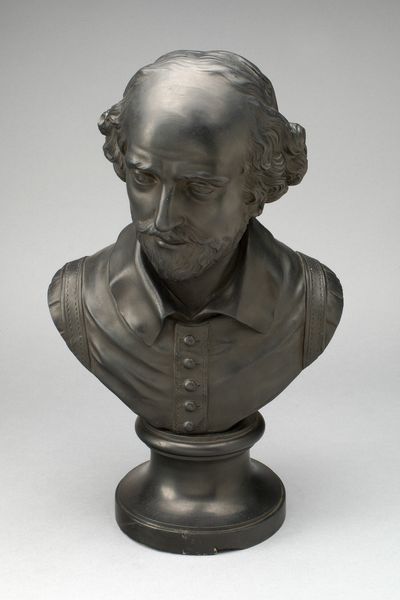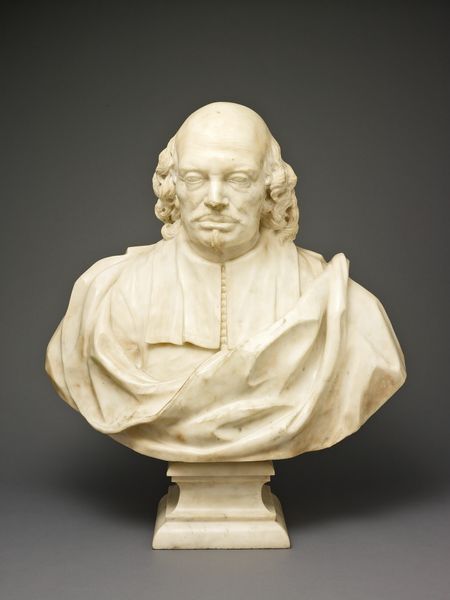
sculpture, marble
#
portrait
#
neoclacissism
#
sculpture
#
geometric
#
classicism
#
sculpture
#
history-painting
#
marble
Dimensions: height 33.5 cm, width 23.3 cm, depth 15 cm, diameter 13.1 cm
Copyright: Rijks Museum: Open Domain
This bust of King Frederick the Great presents us with symbols of power and authority. The King is adorned in what appears to be partial military garb. A single breastplate protects his chest, and a cape is fixed to his shoulder with a sunburst medallion. This sunburst motif has ancient roots, evoking the radiant, life-giving power of the sun, historically associated with gods and rulers across cultures. We see this echoed in the headdresses of ancient Egyptian pharaohs, and in the halos that adorn Christian saints. Consider how such symbols create a feeling of awe and reverence. These motifs tap into our collective memory, triggering subconscious associations of divinity and leadership. Just as the sun was seen as an unconquerable, governing force, so too was the ruler, whose image becomes an instrument of power. These symbols are far from static; they evolve, carrying layers of historical, cultural, and psychological meaning. They remind us that history is not linear, but cyclical, with symbols constantly resurfacing, transformed by each new epoch.
Comments
rijksmuseum about 2 years ago
⋮
Frederick the Great reigned as King of Prussia from 1740 to 1786. He was a fine connoisseur of porcelain and stimulated the growth of the porcelain factory in Berlin. This unglazed porcelain bust imitates marble. It was probably in the possession of Wilhelmina of Prussia, wife of the Dutch stadtholder William V and a niece of Frederick the Great.
Join the conversation
Join millions of artists and users on Artera today and experience the ultimate creative platform.
